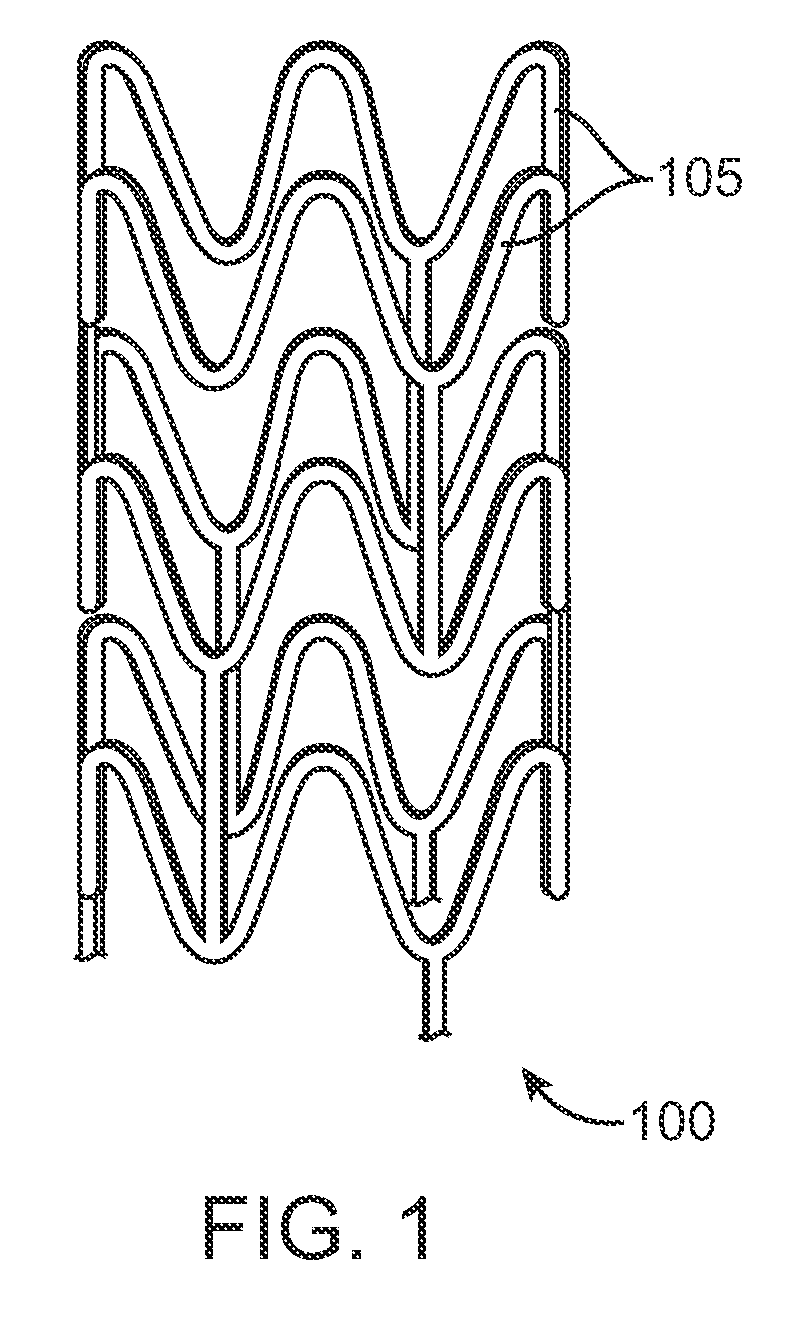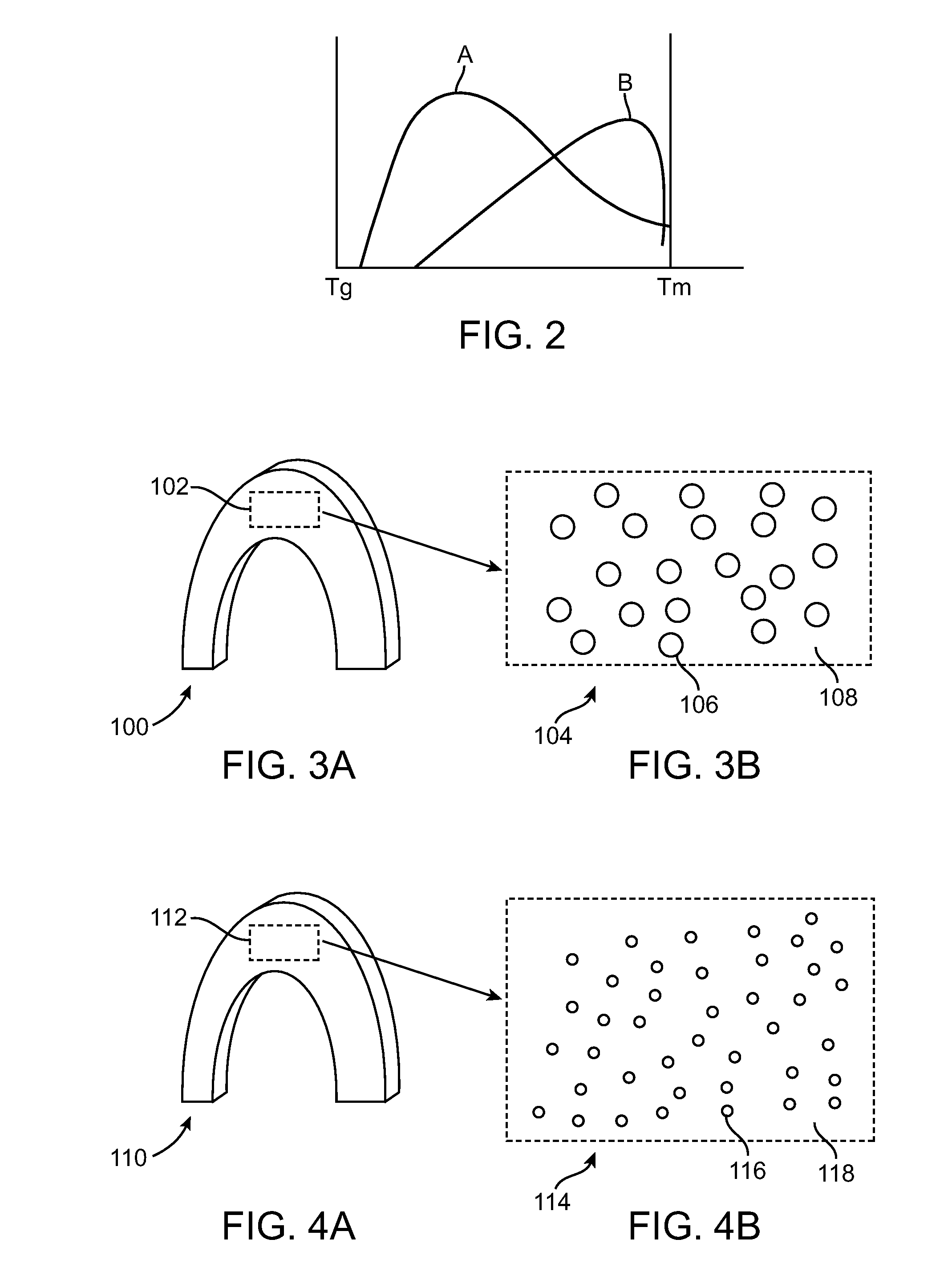Improving fracture toughness of medical devices with a stereocomplex nucleating agent
a nucleating agent and stereocomplex technology, applied in the field of stents, can solve the problems of difficult treatment, adverse or even toxic side effects, and significant problem of stenosis, and achieve the effect of improving the toughness of fractures and improving the toughness of medical devices
- Summary
- Abstract
- Description
- Claims
- Application Information
AI Technical Summary
Benefits of technology
Problems solved by technology
Method used
Image
Examples
example 1
Preparation of PLLA Stent from Extruded and Expanded Tubing Using PLLA / PDLA Stereocomplex as Nucleating Agent
[0096]Step 1 (material mixing): 20 g PDLA (Mw≈600 kg / mol) is mixed with 1 kg of high molecular weight PLLA (Mw≈600 kg / mol) through melt compounding using a twin screw extruder at 200° C., or through solution blending by dissolving both PLLA and PDLA in chloroform and precipitating them into methanol.
[0097]Step 2 (tubing extrusion): The mixed PDLA / PLLA material is extruded in a single screw extruder at 200° C. and directly quenched in cold water. The size of the extruded tubing is set at about 0.02″ for inside diameter (ID) and 0.06″ for outside diameter (OD).
[0098]Step 3 (tubing expansion): The extruded tubing is placed in a glass mold and expanded at about 200° F. to increase its crystallinity and biaxial orientation. The final ID and OD of the expanded tubing are set at 0.10″ and 0.11″, respectively.
[0099]Step 4 (stent preparation): A stent is cut from the expanded tubing u...
example 2
Preparation of PLLA Stent from Extruded Tubing Using PLLA / PDLA Stereocomplex as Nucleating Agent
[0100]Step 1 (material blending): 60 g PDLA (Mw≈600 kg / mol) is blended with 1 kg of high molecular weight PLLA (Mw≈600 kg / mol) through melt compounding in a twin screw extruder at 200° C.
[0101]Step 2 (tubing extrusion): The PDLA / PLLA blend is extruded in a single or twin screw extruder at 200° C. and slowly cooled down in warm / hot water before it's finally quenched in cold water. The size of the extruded tubing is set at about 0.07″ for ID and 0.08″ for OD.
[0102]Step 3 (stent preparation): A stent is directly cut from the extruded tubing using a femto-second laser, crimped down to a smaller size (0.05″) on a balloon catheter and sterilized by an electron beam at a dose of 25 kGray.
PUM
| Property | Measurement | Unit |
|---|---|---|
| processing temperature | aaaaa | aaaaa |
| Tg | aaaaa | aaaaa |
| Tm | aaaaa | aaaaa |
Abstract
Description
Claims
Application Information
 Login to View More
Login to View More - R&D
- Intellectual Property
- Life Sciences
- Materials
- Tech Scout
- Unparalleled Data Quality
- Higher Quality Content
- 60% Fewer Hallucinations
Browse by: Latest US Patents, China's latest patents, Technical Efficacy Thesaurus, Application Domain, Technology Topic, Popular Technical Reports.
© 2025 PatSnap. All rights reserved.Legal|Privacy policy|Modern Slavery Act Transparency Statement|Sitemap|About US| Contact US: help@patsnap.com



